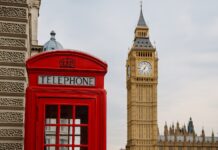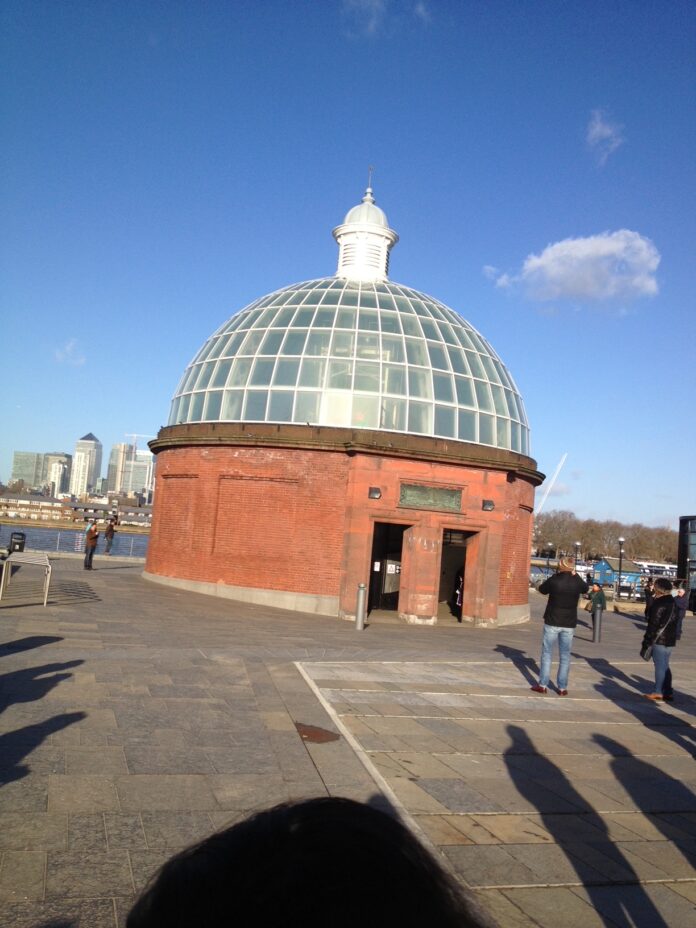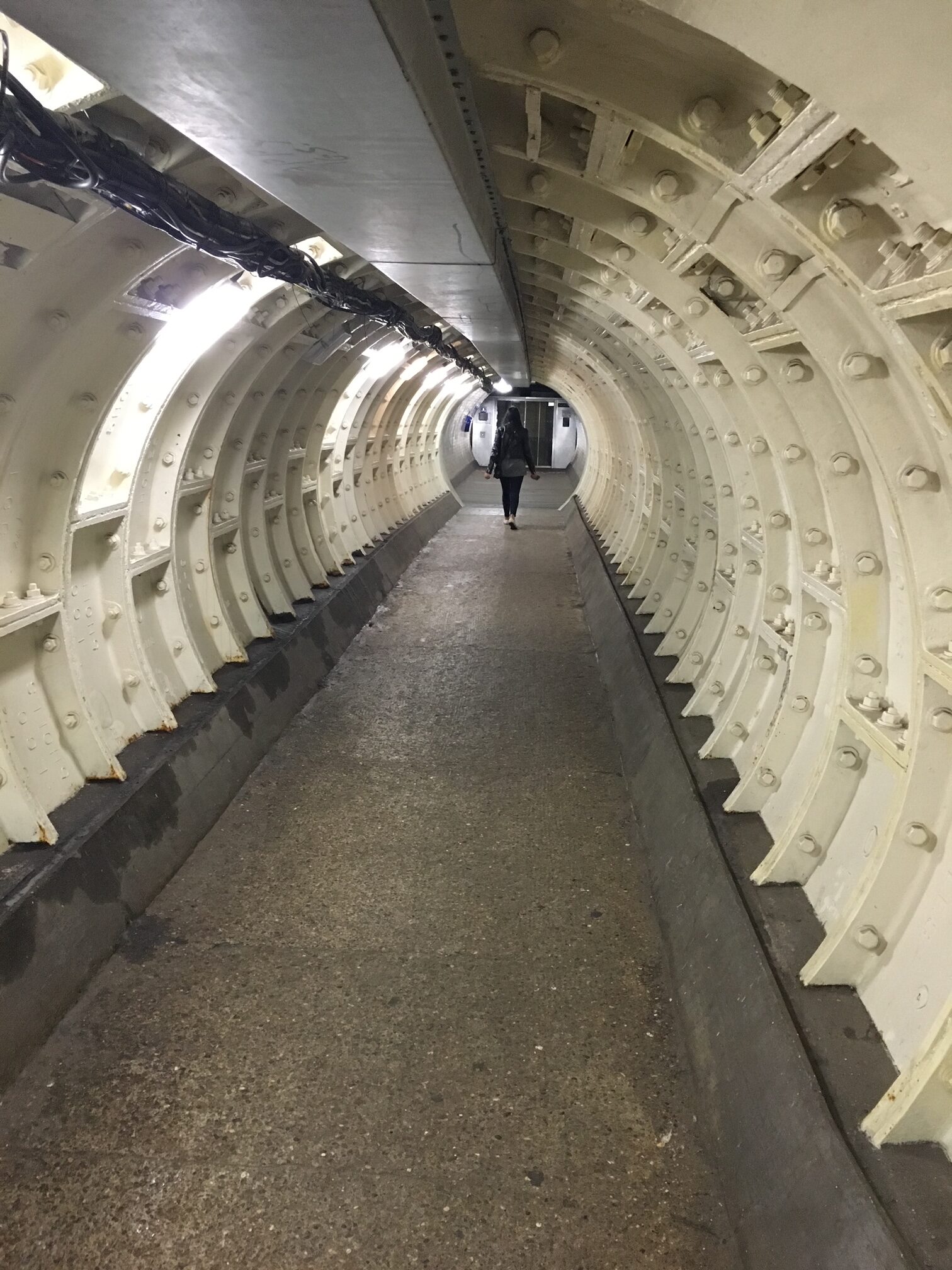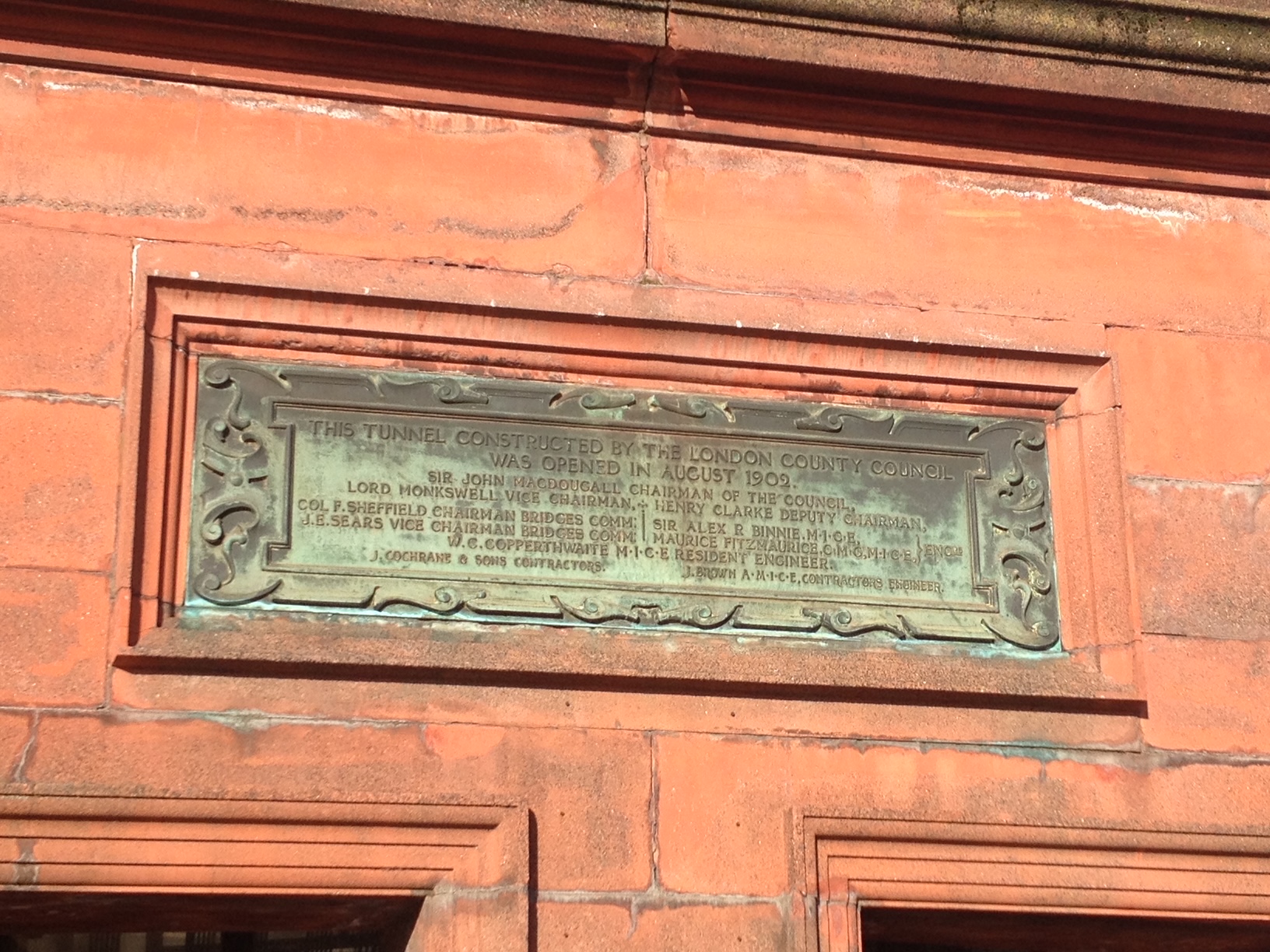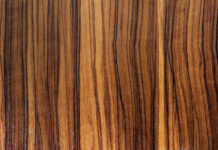Discover the fascinating history and engineering marvel of the Greenwich Foot Tunnel. Connecting Greenwich to the Isle of Dogs since 1902, this iconic passageway remains a vital pedestrian link and a testament to Victorian ingenuity.
Introduction:
Briefly introduce the Greenwich Foot Tunnel, its location, and its significance. The Greenwich Foot Tunnel is an iconic pedestrian tunnel located beneath the River Thames in London, England. It connects the areas of Greenwich, on the south bank, to the Isle of Dogs, on the north bank. Officially opened on August 4, 1902, the tunnel provides a vital link for pedestrians, enabling them to traverse the river safely and efficiently. Its significance lies not only in its practical utility but also in its historical and architectural value. The tunnel remains a popular route for locals and tourists, offering a unique and convenient way to experience the area’s rich history and scenic beauty.
Location of Greenwich Foot Tunnel
The Greenwich Foot Tunnel burrows beneath the River Thames in East London, connecting two vibrant areas:
- Greenwich on the South Bank: On the south side of the river lies Greenwich, a historic borough in the Royal Borough of Greenwich. It’s famous for the Royal Observatory, Greenwich Mean Time (GMT), and the Cutty Sark, a restored 19th-century clipper ship. The tunnel entrance here is situated close to the Cutty Sark’s impressive prow.
- Millwall (Isle of Dogs) on the North Bank: On the north bank lies Millwall, a district within the London Borough of Tower Hamlets. Previously known for its docks and industrial activity, the area is undergoing significant regeneration, transforming into a modern hub with residential areas, parks, and business centres. The Greenwich Foot Tunnel’s northern entrance emerges in the Isle of Dogs, a larger area within Tower Hamlets known for its contemporary architecture and Canary Wharf business district.
Here’s a more detailed breakdown of the location:
- City: London, England
- River Crossing: Beneath the River Thames (East London)
- Southern Entrance: Greenwich (Royal Borough of Greenwich) – near the Cutty Sark
- Northern Entrance: Millwall (Isle of Dogs) (London Borough of Tower Hamlets)
Here’s a closer look at the specific location:
- Close to Major Landmarks: The Greenwich entrance is a short walk from the Cutty Sark and the National Maritime Museum, making it convenient for exploring Greenwich’s history.
- Island Gardens Access: The Millwall (Isle of Dogs) exit leads to Island Gardens, a park offering green space and stunning panoramic views of the Greenwich skyline, including the Royal Observatory.
- DLR (Docklands Light Railway) Connections: Public transportation options like the Docklands Light Railway (DLR) can get you close to either entrance. The “Cutty Sark” DLR station provides easy access to the Greenwich side, while the “Island Gardens” station is a short walk from the Millwall exit.
History and Construction of Greenwich Foot Tunnel
Historical context and the reason for its construction. The Greenwich Foot Tunnel was conceived in the late 19th century during a time of rapid industrial expansion and urban development in London. Before its construction, the only means for pedestrians to cross the River Thames in this area was unreliable ferry services, often hindered by poor weather conditions and river traffic. The tunnel was built to provide a dependable and all-weather pedestrian route, addressing the growing need for safe and efficient transportation between the bustling docks and industrial centres on both sides of the river. Its construction reflects the Victorian era’s engineering ambitions, showcasing the time’s innovative spirit.
Construction timeline, from its inception in the late 19th century to its completion in 1902. The idea for the Greenwich Foot Tunnel emerged in the late 1890s, and construction began in 1899 under the direction of Sir Alexander Binnie, a prominent civil engineer. The London County Council undertook and executed the project by the contractor John Cochrane & Co. Despite facing significant engineering challenges, including working below the riverbed and ensuring the tunnel’s structural integrity, the project progressed steadily. By 1901, the main excavation was completed, and the tunnel was fitted with cast-iron lining segments. Final touches and safety inspections were carried out in early 1902, leading to the tunnel’s official opening on August 4, 1902, marking a remarkable achievement in civil engineering.
Reasons for building the tunnel include the need for a pedestrian route under the River Thames. The primary reason for constructing the Greenwich Foot Tunnel was to provide a reliable and safe pedestrian crossing under the River Thames, addressing the inadequacies of existing ferry services. The Industrial Revolution led to significant urban growth and increased movement between Greenwich and the Isle of Dogs. Workers, merchants, and residents needed a dependable route to travel between the thriving docklands and commercial areas. The tunnel offered an all-weather, free-to-use alternative, enhancing connectivity and supporting the economic and social activities on both sides of the river. Its construction was a forward-thinking solution to the transportation challenges of the era.
Architectural and Engineering Features
The tunnel’s design, including its length, diameter, and construction materials. The Greenwich Foot Tunnel is an engineering marvel, extending approximately 370 meters (1,214 feet) in length and with an internal diameter of about 3 meters (10 feet). The tunnel’s design features a cylindrical structure composed of cast-iron segments bolted together to form a robust, durable tube. The interior is lined with concrete and brick, providing additional strength and stability. The tunnel’s design reflects the advanced engineering techniques of the early 20th century, incorporating materials and construction methods that ensured its longevity and resilience against the pressures of the riverbed and the weight of the water above.
Engineering challenges faced and how they were overcome. Constructing the Greenwich Foot Tunnel presented several engineering challenges, primarily related to excavating beneath the riverbed and maintaining the tunnel’s structural integrity. One significant challenge was preventing water ingress during construction, which was addressed using compressed air to create a dry working environment within the tunnel. Workers, known as “sandhogs,” faced the arduous task of digging through the riverbed while dealing with the risks of decompression sickness. The tunnel’s cast-iron lining provided a strong and flexible structure, capable of withstanding the immense pressure from the river above. Deep vertical shafts were sunk at both ends to house access points, and careful planning ensured the tunnel’s alignment and stability.
Usage and Cultural Significance
The tunnel has been used over the years, from its early days to the present. Since its opening in 1902, the Greenwich Foot Tunnel has been a vital pedestrian link, facilitating daily commutes and leisurely walks between Greenwich and the Isle of Dogs. In its early years, the tunnel was heavily used by workers commuting to the bustling docks and industrial areas. The tunnel was a secure crossing point during both World Wars, even when air raids targeted bridges. Over the decades, the tunnel has continued to be a popular route for residents, students, and tourists. Its enduring use highlights its importance as a reliable and convenient means of crossing the Thames, adapting to the changing needs of the communities it serves.
Notable events or historical moments associated with the tunnel. The Greenwich Foot Tunnel has witnessed several notable events and historical moments. During World War II, the tunnel was temporarily closed due to bomb damage but was quickly repaired and reopened, showcasing its resilience and importance. In recent years, the tunnel has been featured in various cultural and media productions, including films, television shows, and documentaries, underscoring its iconic status. Additionally, the tunnel’s centenary in 2002 was celebrated with events and activities that highlighted its historical significance and continued relevance. These moments have cemented the tunnel’s place in London’s collective memory and cultural heritage.
Tunnel’s role in local culture and its importance to the communities on both sides of the river. The Greenwich Foot Tunnel has become an integral part of the local culture, symbolizing the industrial heritage and community spirit of the areas it connects. For residents of Greenwich and the Isle of Dogs, the tunnel is more than just a transportation route; it is a cherished landmark that reflects the history and development of their neighbourhoods. The tunnel’s presence has fostered a sense of connection and continuity, linking generations who have used it for their daily commutes, leisure activities, and social interactions. Its role in local culture is evident in the fond memories and stories shared by those who have traversed its length over the years.
Renovations and Modern Day
Major renovations and repairs the tunnel has undergone, including recent refurbishments. The Greenwich Foot Tunnel has undergone several major renovations and repairs to maintain its structural integrity and safety. One of the most significant refurbishments occurred between 2010 and 2012 when the tunnel was closed for extensive modernization. During this period, the lifts at both ends were replaced, new staircases were installed, and improvements were made to the ventilation and lighting systems. These upgrades ensured the tunnel met contemporary safety standards and remained accessible to all users. The renovation project also included structural repairs to the tunnel lining and waterproofing measures to address potential leaks.
The current state of the tunnel and its usage today. Today, the Greenwich Foot Tunnel remains a well-maintained and heavily used pedestrian route, continuing to serve the communities on both sides of the River Thames. The modernizations carried out in recent years have significantly enhanced the tunnel’s safety, accessibility, and overall user experience. The tunnel is equipped with CCTV surveillance and emergency communication systems, ensuring the safety and security of its users. Despite the advancements in transportation infrastructure in London, the tunnel retains its popularity due to its unique charm and historical significance. It remains a favourite route for locals and tourists, providing a convenient and scenic way to cross the river.
Technological upgrades or modern safety measures have been implemented. In addition to structural repairs and aesthetic improvements, the Greenwich Foot Tunnel has seen several technological upgrades and modern safety measures. These include the installation of new lifts with advanced safety features, improved lighting to ensure visibility throughout the tunnel, and enhanced ventilation systems to maintain air quality. CCTV cameras have been installed to monitor the tunnel and ensure the safety of its users. Regular maintenance checks and inspections are conducted to address any potential issues promptly. These upgrades have helped preserve the tunnel’s functionality while ensuring it meets contemporary safety standards, making it a reliable and secure pedestrian route.
Visitor Experience
What visitors can expect when walking through the tunnel, including entry points and scenic views. Visitors to the Greenwich Foot Tunnel can expect a unique and historically rich experience as they walk through this iconic passageway. The tunnel is accessed via two distinctive circular brick entrance buildings, one located near the Cutty Sark in Greenwich and the other at Island Gardens on the Isle of Dogs. Inside, visitors can choose to use the lifts or spiral staircases to descend into the tunnel. Walking through the brick-lined passage, they can admire the craftsmanship and engineering that went into its construction. The tunnel’s ambience and knowledge of being beneath the River Thames create a sense of adventure and connection to the past.
Offer tourist tips, such as nearby attractions and the best times to visit. For tourists planning to visit the Greenwich Foot Tunnel, it’s advisable to go during weekdays or early mornings to avoid crowds and enjoy a more leisurely walk. The surrounding areas offer a wealth of attractions that complement the tunnel experience. Visitors can explore the Cutty Sark, the National Maritime Museum, and the Royal Observatory in Greenwich. The Greenwich Market and the picturesque Greenwich Park are also nearby, providing shopping, dining, and relaxation opportunities. Island Gardens offers stunning views of the Old Royal Naval College and the River Thames on the Isle of Dogs side. Combining a visit to the tunnel with these attractions can make for a fulfilling and memorable day out.
Fun Facts and Trivia about Greenwich Foot Tunnel
Interesting and lesser-known facts about the tunnel include its depth below the river, anecdotes from its construction, and any myths or legends. The Greenwich Foot Tunnel has intriguing facts and trivia that add to its allure. For instance, the tunnel descends to a depth of approximately 15 meters (50 feet) below the river’s surface, providing a fascinating subterranean journey. During its construction, there was an incident where the tunnel temporarily flooded, but quick action by the engineers prevented any lasting damage. Workers also faced decompression sickness due to the pressurized conditions used to keep water out. The tunnel has inspired various myths and legends, including tales of ghostly apparitions and eerie sounds, which have captured the imaginations of locals and visitors alike.
- Deeper than a dip: The Greenwich Foot Tunnel isn’t the deepest tunnel in the world, but it’s a respectable 50 feet (15.2 meters) below the River Thames, offering a cool and refreshing passage even on the hottest London days.
- Lifted by luxury (almost): The original plan called for a horse-drawn carriage to transport passengers through the tunnel. Thankfully, this extravagant idea was scrapped in favour of the more practical lifts, installed in 1904. During construction, the excavated material was removed by horse-drawn carts and lifted to the surface by a steam crane. Wealthier residents complained about the noise and dust, so the engineers upped their game and switched to a quieter electric crane.
- Built for the working man: Championed by Will Crooks, a dockworker-turned-politician, the tunnel responded to the high cost and unreliability of ferries that dockworkers relied on to get to work. The tunnel offered a much quicker and cheaper alternative.
- Tunnel with a view (almost): The initial designs included windows along the sides of the tunnel to allow passengers to see the riverbed. This was deemed impractical and potentially dangerous, so the final design has no windows. This idea was scrapped due to concerns about water leaks and potential damage from passing ships.
- WWII scar: A bomb damaged the northern entrance of the tunnel during the Blitz in World War II. The repairs included a thicker steel and concrete lining, slightly reducing the diameter of that section.
- Haunted by history? The most common story mentions three ghosts: a young girl and a Victorian-era couple. These apparitions haven’t been widely reported, and their origins likely stem from the tunnel’s atmosphere – dark, echoing, and potentially unsettling for some.
- Unexplained Activity: There are scattered reports of visitors experiencing strange occurrences like disembodied footsteps, feelings of being watched, or sudden temperature drops. These could be due to the tunnel’s ventilation system or acoustics playing tricks on the mind. The dampness, cool temperature, and lack of natural light can create an unsettling feeling for some people, fueling ghost stories.
- Royal connection (sort of): Queen Alexandra reportedly used the tunnel on a private visit to inspect the engineering marvel shortly after it opened in 1902.
- Royal seal of approval: King Edward VII and Queen Alexandra officially opened the tunnel in 1902. Legend has it the Queen wasn’t thrilled about descending the long staircase and preferred to be carried down in a sedan chair!
- More than a passage, the tunnel has been used to film movies like “The Halfway House” (2004) and “Shaun of the Dead” (2004), adding a pop culture layer to its history.
- A lucky escape? Legend says a group of thieves once used the tunnel to escape after robbing a nearby bank. Whether this is true or not, it adds a bit of intrigue to the tunnel’s lore.
- Lifts weren’t always automatic: Originally, the lifts at either end were operated by attendants. These were eventually replaced by the automatic lifts we see today.
- Lifts weren’t always there: Originally, access was by a whopping 100 steps on the Greenwich side and 88 on the Isle of Dogs. Lifts were only added in 1904, making it a more user-friendly option.
- A tile tale: The tunnel is lined with over 200,000 white-glazed tiles. While their primary purpose is practical, the bright tiles contribute to the tunnel’s unique atmosphere. Next time you walk through, see if you can spot any imperfections or repairs in the seemingly endless white expanse.
- A cool escape on a hot day: Thanks to its depth and location, the tunnel remains a refreshingly cool spot even on the hottest London days. So next time you’re looking for a respite from the summer heat, consider a walk through the Greenwich Foot Tunnel.
- Artistic Tributes: The tunnel walls were originally intended to be adorned with murals depicting scenes of maritime history. Unfortunately, budget constraints shelved this plan.
- Engineering Feat: Building a tunnel beneath a busy river like the Thames was no small feat. The project used a technique called “shield tunnelling”, which involved pushing prefabricated iron rings forward as they excavated the earth.
- Nicknames and Folklore: The tunnel has earned a few nicknames over the years, including “The Greenie” and “The Penny Dreadful” (referencing a type of 19th-century sensationalist fiction). Local folklore also suggests it was once a popular spot for settling arguments with fistfights – though, thankfully, there’s no evidence to support this!
- Celebrity Crossings: While not a daily occurrence, the Greenwich Foot Tunnel has seen its share of famous visitors. Charlie Chaplin, Laurel, and Hardy are rumored to have used it during filming in the area.
- Close call: The tunnel narrowly avoided disaster in 1916 when a German spy was caught attempting to sabotage the ventilation system. Luckily, his plan was thwarted.
- Artistic endeavours: Over the years, the tunnel walls have been used as a canvas for unofficial artwork. While some find it charming, authorities periodically remove graffiti to maintain the tunnel’s aesthetics.
- A marathon venue: The annual Greenwich Mean Time (GMT) Marathon uses the tunnel as part of its course. Runners get the unique experience of traversing under the Thames.
- Working Men’s Tunnel: A newspaper report referred to the tunnel as the “Working Men’s Tunnel” because it was seen as a way to improve dockworkers’ commutes. This term never gained widespread use.
Appearances in media, literature, or popular culture about Greenwich Foot Tunnel
The Greenwich Foot Tunnel has made several appearances in media, literature, and popular culture, underscoring its iconic status. It has been featured in films, television shows, and documentaries, often used as a dramatic and atmospheric setting. The tunnel’s unique ambience and historical significance make it an attractive location for filmmakers and writers. Its portrayal in popular culture has helped to cement its status as a beloved landmark and has introduced it to new audiences. The tunnel’s presence in media and literature continues to highlight its importance as both a functional infrastructure and a cultural symbol.
Glazed domes perched atop the Greenwich Foot Tunnel
The glazed domes on both sides of the Greenwich Foot Tunnel are distinctive architectural features. These domes are located at the entrances to the tunnel, one on the Greenwich side and the other on the Isle of Dogs side. The domes are constructed with glass and metal, allowing natural light to illuminate the spiral staircases and lifts leading down to the tunnel. The domes not only serve a functional purpose but also add an aesthetic appeal to the entrances of the tunnel. They are iconic landmarks and are often photographed by visitors. Over the years, the domes have undergone restoration to maintain their structural integrity and historical value. Here’s a breakdown of their significance:
Letting in the Light:
- Natural Illumination: The primary purpose of the domes is to bathe the entrance shafts in natural light. This creates a welcoming and bright atmosphere compared to a dark, enclosed entryway. Imagine descending into the tunnel on a sunny day – the natural light filtering through the domes would be a pleasant contrast to the cooler, underground environment.
Ventilation Aid:
- Airflow Enhancer: While there might be a dedicated ventilation system, the glazed domes likely play a role in natural air circulation, especially near the entrances. The dome design allows some air movement, helping to keep the tunnel fresh.
Architectural Landmark:
- Distinctive Feature: The domes are a signature architectural element of the Greenwich Foot Tunnel. Their curved form and glazed surface add a touch of grandeur and visual interest. They stand out from the surrounding buildings, making the tunnel entrances easily identifiable.
Historical Significance:
- Preserved Design: The Greenwich Foot Tunnel has maintained its original design, and the domes are a part of that history. They offer a glimpse into the architectural style and engineering practices of the early 20th century. Seeing the domes today allows us to appreciate the tunnel’s heritage and the vision of its creators.
Beyond the Practical:
- Awe-Inspiring Entry: Stepping beneath the glazed domes can be an evocative experience. The natural light streaming through creates a sense of anticipation before entering the tunnel. It’s a subtle transition from the bustling streets above to the cooler, historic passage below.
The glazed domes are much more than just decorative elements. They play a crucial role in the tunnel’s functionality, contribute to its unique aesthetic, and connect us to its rich history. They are a testament to the thoughtful design and enduring legacy of the Greenwich Foot Tunnel.
The plaque on the dome at the entrance of the Greenwich Foot Tunnel from the Cutty Sark side typically includes information about the tunnel.
The plaque on the entrance from the Cutty Sark side reads:
“THIS TUNNEL CONSTRUCTED BY THE LONDON COUNTY COUNCIL
WAS OPENED IN AUGUST 1902.
SIR JOHN MACDOUGALL
CHAIRMAN OF THE COUNCIL
LORD MONKSWELL VICE CHAIRMAN
HENRY CLARKE DEPUTY CHAIRMAN
COL. F. SHEFFIELD CHAIRMAN BRIDGES COMMITTEE
J.B. SEARS VICE CHAIRMAN BRIDGES COMMITTEE
SIR ALEX R. BINNIE, M. INST. C.E.
MAURICE FITZMAURICE, C.M.G., M. INST. C.E., ENGINEER
W.C. COPPERTHWAITE, M. INST. C.E., RESIDENT ENGINEER
J. COCHRANE & SONS, CONTRACTORS
J. BROWN, A.M. INST. C.E., CONTRACTOR’S ENGINEER”
This text commemorates the tunnel’s construction and opening and lists the key individuals involved in its creation and oversight.
Conclusion
The Greenwich Foot Tunnel is a testament to the ingenuity and determination of the engineers and workers who brought it to life over a century ago. Its construction marked a significant milestone in civil engineering, showcasing the innovative spirit of the Victorian era. The tunnel’s historical significance and its enduring functionality make it a vital piece of London’s heritage. It has played a crucial role in the daily lives of countless individuals, providing a safe and reliable means of crossing the River Thames. As a cultural icon, the tunnel continues to captivate and inspire, reflecting the rich history and vibrant spirit of the communities it serves.
Visiting the Greenwich Foot Tunnel is a must for anyone interested in exploring London’s rich history and experiencing a unique architectural feat. Walking through this historic passageway offers a fascinating glimpse into the past and the excitement of traversing beneath one of the city’s most famous rivers. Whether you are a local resident or a tourist, the tunnel provides a memorable and enriching experience. So, take a step back in time and immerse yourself in the story of the Greenwich Foot Tunnel, a remarkable journey through history and an engineering marvel.










